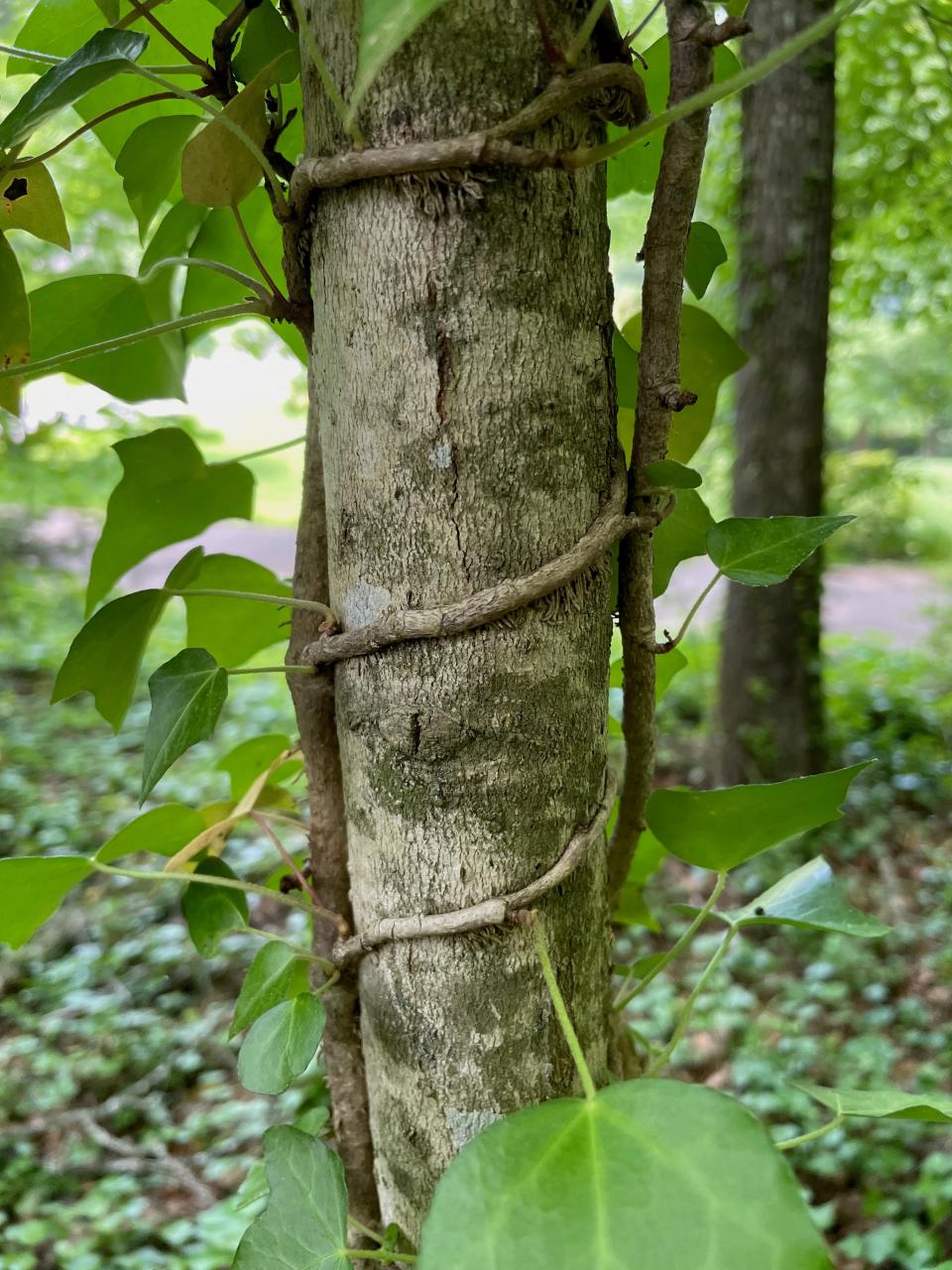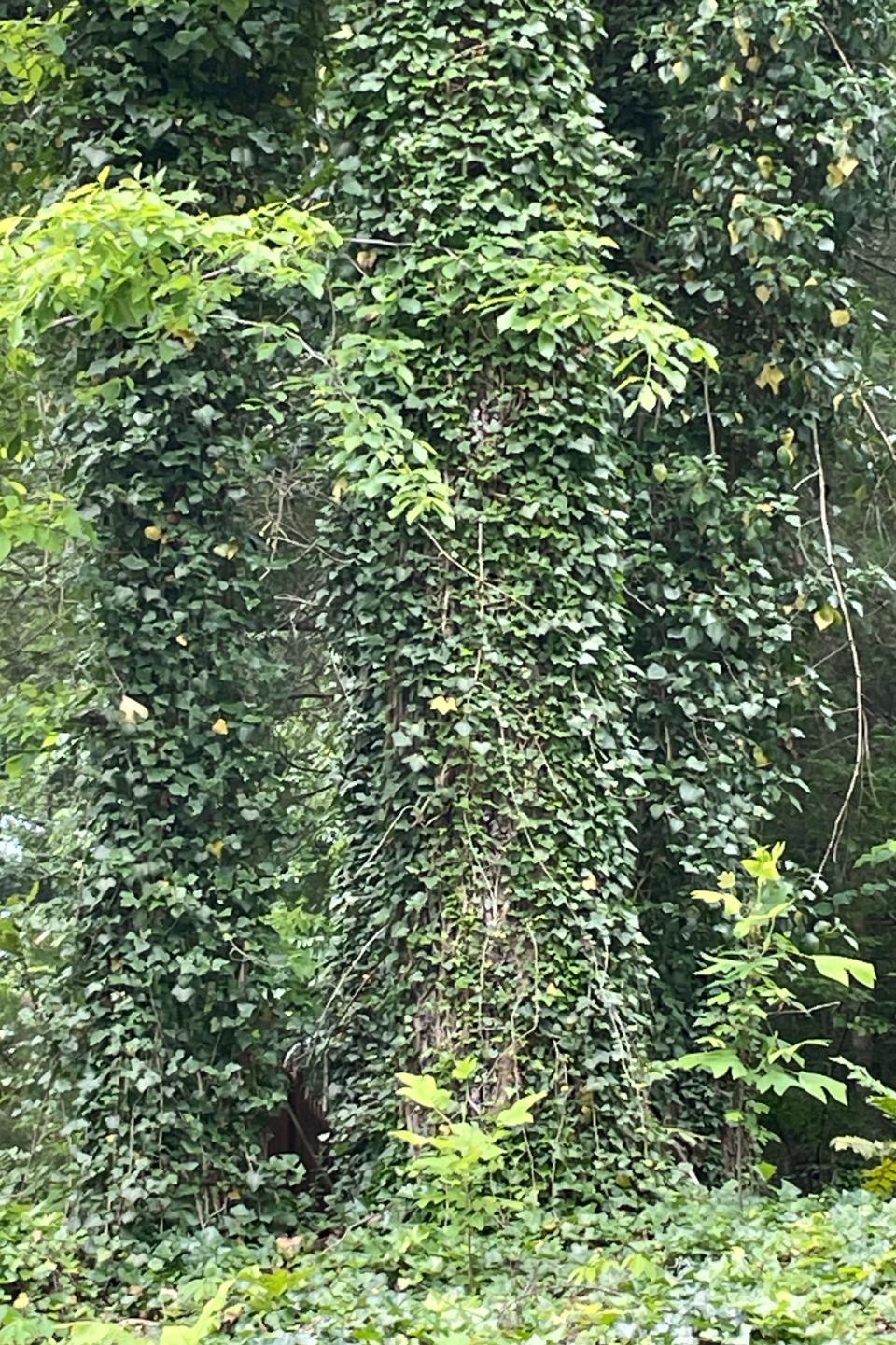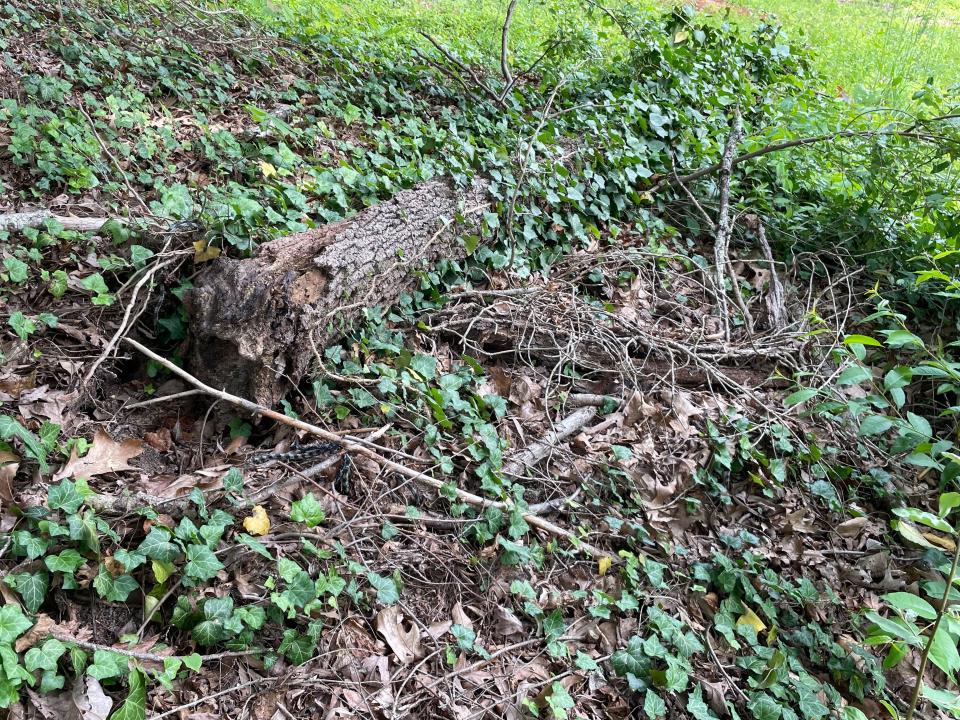Property owners beware: Vines are killing your trees
In Oak Ridge, trees are being strangled, suffocated and swallowed by vines.

Kudzu. Virginia creeper. Poison ivy vines. Grapevines. Trumpet vines. Wisteria vines. English ivy vines in wooded yards.
“Vines are climbers,” said Chuck Coutant, a biologist who co-wrote with Bob Compton an article on the problem published on the front page of the May newsletter for the Tennessee Citizens for Wilderness Planning (TCWP). He explained that most vines climb trees to get closer to the canopy where they can soak up more sunlight.
He added that vines reaching the tops of trees may suffocate their hosts by covering their leaves and preventing photosynthesis. This vital process enables trees to make carbohydrates that travel throughout the tree and to the roots, nourishing them and causing them to grow. Wisteria vines can circle and strangle a tree trunk, keeping it from expanding.
“When a tree’s growth is stunted, it ultimately dies,” Coutant said.

Some dead trees suffocated by vines have fallen across Emory Valley Road, said Compton, a member of TCWP and an Emory Valley resident. “No one has been hurt and no cars have been damaged so far. Property owners who allow their vine-strangled trees to die and fall might be liable for any harm that is inflicted on people or property.”
Compton recommended that property owners have their dead trees removed. He said there is evidence that some insurance companies will argue that a homeowner was negligent for not removing a dead tree that later fell and caused damage.
Coutant wrote in the TCWP article that, “West Hills has many wooded yards where English ivy beds have replaced grass, with the ivy climbing each tree. Oak Ridge’s biggest tree problem is with English ivy, which is especially prevalent in older yards and green spaces.”
Compton said there is speculation that tree-choking vines are growing faster because of increased levels of atmospheric carbon dioxide. He noted that he recently saw large blocks of Clinton Highway lined with trees being killed by vines.
Saving living trees wrapped in vines is not difficult to do, Coutant wrote.
“Snip all the vines a few feet above the base of the tree and then pull out the roots from the ground a few feet away from the base. The remaining vine will die and should be left to fall off.”
Coutant cautioned that the vine should not be pulled down and off the tree because this unnecessary action might damage the bark. He recommended that gloves be used for cutting and uprooting vines because poison ivy vines (three-part leaves) also climb trees.

For more information, visit https://www.thetreecareguide.com/climbing-vines-tree-killers/.
This article originally appeared on Oakridger: Property owners beware: Vines are killing your trees

